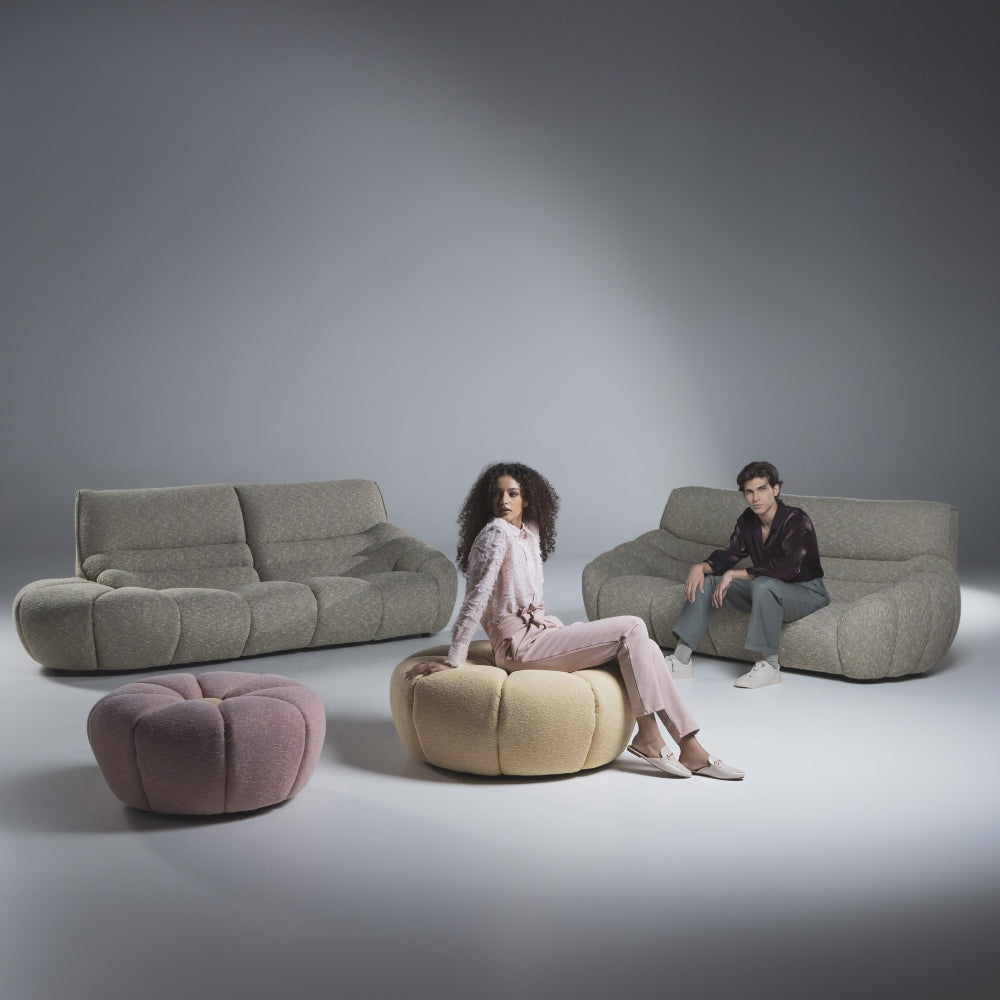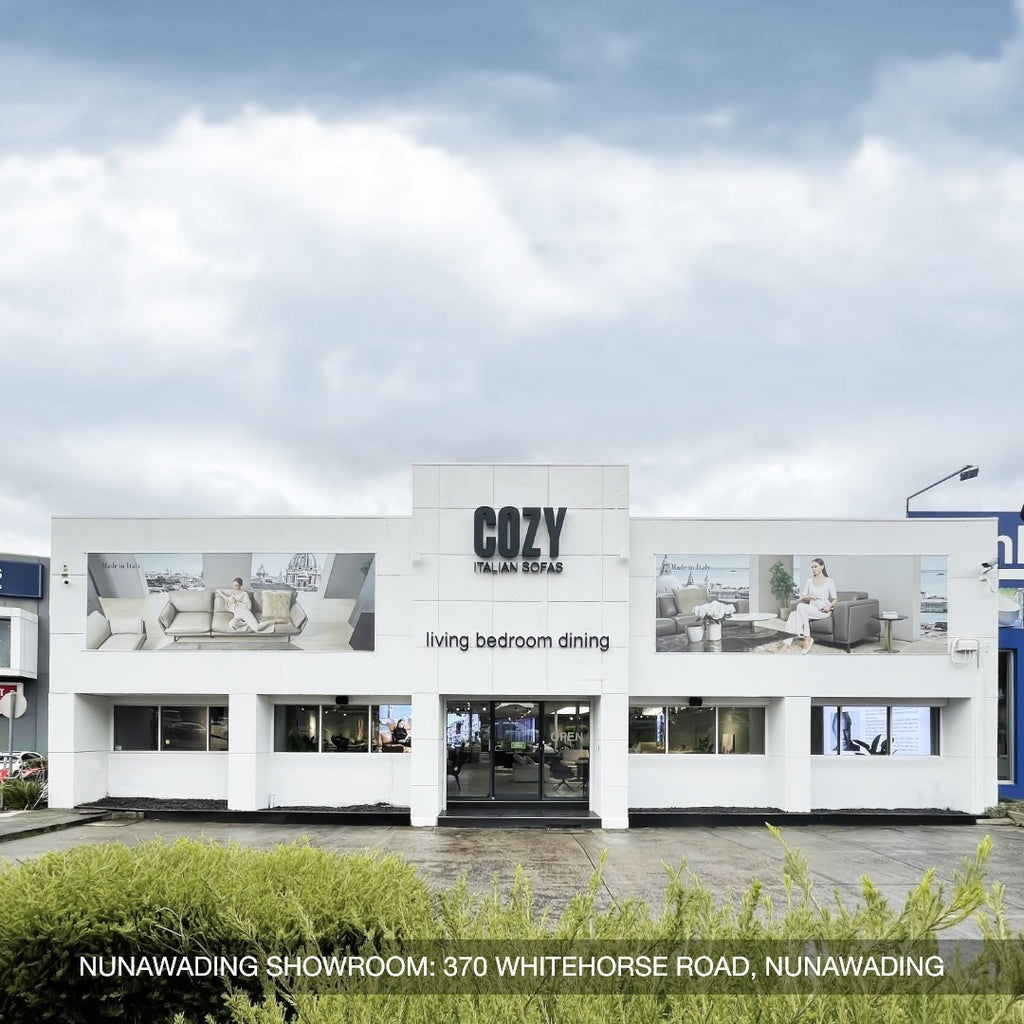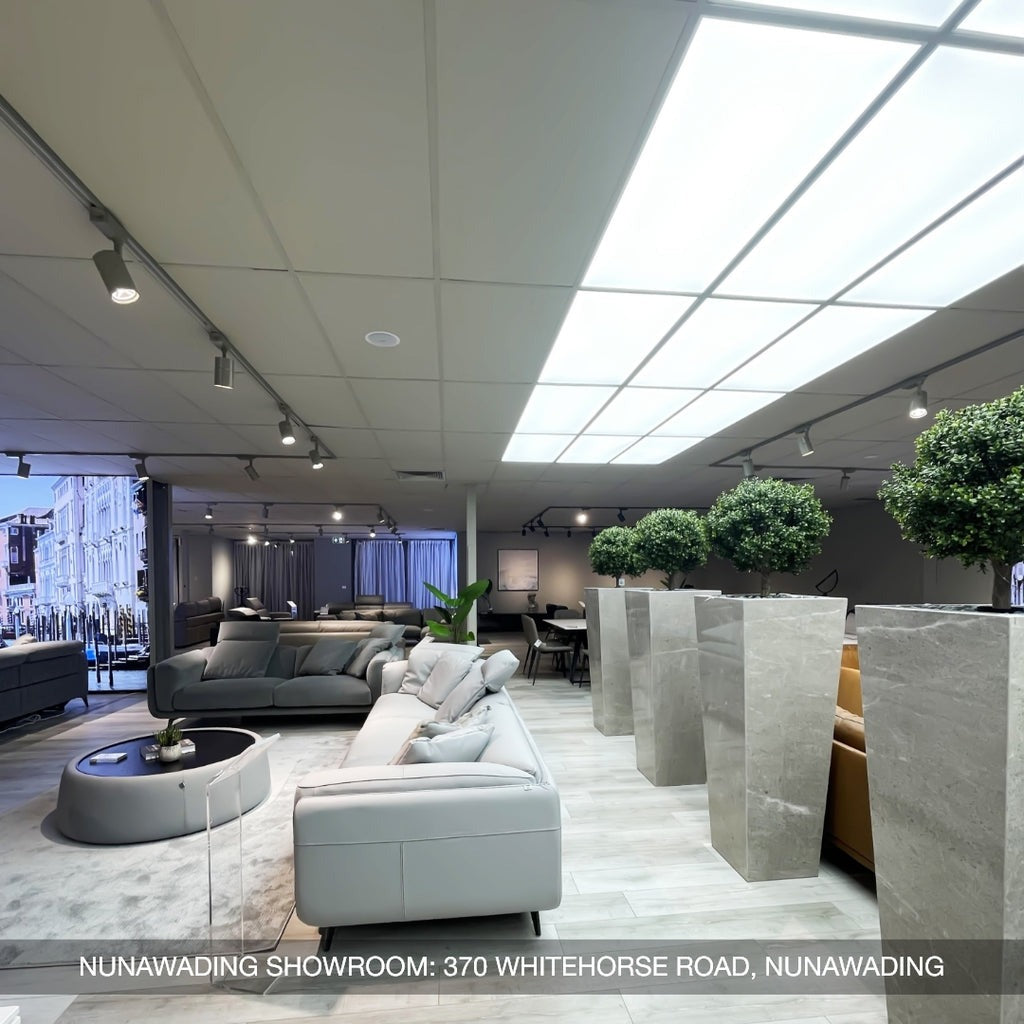Designing a living room with different color sofas offers a great opportunity to add depth and character to your space. However, to achieve a stylish and cohesive look, it’s essential to create a balance between contrast and harmony. The key is to choose colors that complement each other while considering the overall aesthetic of the room. A well-planned arrangement of 2 different color sofas in living room can enhance visual interest without making the space feel disjointed.
Principles to Match Two-Toned Sofas in the Living Room
When thoughtfully arranged, 2 different color sofas in living room can transform a space into a visually appealing and well-balanced environment. However, without a strategic approach, the contrast may feel unintentional and disjointed. The following strategies will help in combining neutral and bold colors, enhancing contrast while preserving unity.
Color Coordination Strategies
The right balance between bold and neutral hues can define the room’s ambiance, making it feel either lively and dynamic or soothing and refined. Properly coordinated color schemes can influence mood and perceived spaciousness, with cooler tones creating openness and warmer hues adding coziness.
- Complementary Contrast: Pairing a bold shade with a neutral counterpart such as navy with cream, or deep emerald with light beige creates a balanced yet visually dynamic space. This method ensures that the contrast feels deliberate rather than clashing. To tie the look together, use shared accent colors in pillows, rugs, or artwork. Repeating a color at least three times within a room strengthens visual cohesion, making the mix of colors appear more harmonious.
- Monochromatic Layering: Sticking to a single color family and using variations in tone—like forest green with sage or charcoal with dove gray, creates a subtle, layered effect. This technique aligns well with minimalist living room design principles, ensuring that different shades blend naturally. Designers often recommend monochromatic palettes in smaller living rooms, as they maintain unity while still allowing for depth and variation.
- Rule of Three: Limiting the color palette to two or three core shades prevents the room from feeling cluttered or overwhelming. This method ensures consistency by repeating these colors in key decor elements, such as curtains, cushions, or artwork. Color psychology suggests that spaces with three dominant hues feel more curated and intentional, making it easier to integrate 2 different color couches while maintaining balance.

Striking the right balance between bold and neutral hues shapes the room’s ambiance, creating either a vibrant, energetic feel or a calm, sophisticated atmosphere.
Style Continuity
Regardless of their color difference, sofas should share at least one design element to create visual harmony. This could be a similar silhouette (e.g., both mid-century modern), leg style (e.g., wooden or metal legs), or upholstery material (e.g., both linen or leather).
If the sofas differ significantly in color, using different textures such as pairing velvet with leather or boucle with linen can add richness while balancing the contrast. This technique works particularly well in modern interiors, where texture variety creates an intentional, layered look.
Decorative pillows or throws that incorporate both sofa colors help unify the space. A study in spatial design suggests that integrating mixed-color elements in at least three different areas (e.g., pillows, a rug, and wall art) creates a subconscious sense of cohesion.
Note: Larger spaces can accommodate high-contrast color combinations better, as the room’s openness prevents visual overcrowding. Conversely, smaller living rooms benefit from subtle tonal differences and streamlined silhouettes to maintain an airy, uncluttered feel.

To further unify the space, decorative pillows or throws that incorporate both sofa colors can tie the look together.
Ideas to Transform a Living Room with Different Color Sofas
Mixing 2 different color sofas in living room design can elevate your space by adding contrast, depth, and personality. However, without a strategic approach, mismatched sofas may feel disconnected rather than intentional. By following principles drawn from current living room color trends, homeowners can confidently integrate bold pairings, complementary color schemes, and diverse textures. These techniques ensure that different-colored sofas coexist beautifully while maintaining a cohesive and stylish atmosphere.
Bold and Neutral Pairings
One of the most effective ways to incorporate 2 different color sofas in living room design is by pairing a bold hue with a neutral tone. This approach creates contrast while preserving balance, ensuring that neither sofa dominates the space.
- Emerald Green + Beige Linen: A deep teal or emerald velvet sofa paired with a neutral linen sofa creates a luxurious and well-balanced contrast. According to current living room color trends, jewel tones like emerald remain popular, especially when offset by soft neutrals. To unify the look, repeat both colors in throw pillows, a statement rug, or wall art.
- Mustard Yellow + Deep Bluish-Green: This pairing, exemplified by FC London’s styling, showcases how rich, bold hues can coexist without clashing. Anchoring these colors with pale neutrals in surrounding decor, such as accent chairs and rugs, prevents overwhelming the space.
- Leather + Velvet Textures: Combining a warm brown leather sofa with a plush velvet one in a contrasting hue (e.g., navy, emerald, or burgundy) adds depth and sophistication. Unify the look by selecting metallic accents (such as gold or brass legs) and grounding the design with a neutral rug.
Complementary Color Schemes
For those looking to follow color theory, pairing hues from opposite sides of the color wheel ensures a dynamic yet cohesive space. Complementary color pairings are widely used in interior design because they enhance contrast while maintaining a sense of unity.
- Navy + Rust: A deep navy sofa paired with a burnt orange or rust-colored one creates a rich, inviting contrast. Designers like Nishtha Vashist suggest incorporating these colors into accessories such as cushions, throws, or abstract artwork to subtly link the elements.
- Sage Green + Blush Pink: A muted sage green sofa with a soft blush pink loveseat creates a fresh, modern aesthetic. Studio McGee’s airy layouts often feature these complementary tones, unified by matching wood accents and botanical prints. This pairing is particularly effective when aiming for creating a calm, neutral living space, as both colors have a soothing effect.
Eclectic and Boho Styles
For those who prefer an unconventional approach, mixing different seating options in eclectic or boho interiors allows for more creativity. The key is to blend various styles and textures while maintaining a few unifying design elements.
- Dark Blue Velvet + Neutral Linen: A deep blue velvet sofa paired with a soft cream linen one blends bold and neutral tones while keeping the space balanced. Using similar mid-century modern lines and a shared wood coffee table helps bridge the contrast.
- Vintage + Modern Mixes: A boho-inspired space can feature a traditional tufted sofa paired with a sleek, armless daybed for a mix of eras. A Persian or vintage rug alongside eclectic artwork helps tie the mismatched pieces together.
Layout Techniques
Placing two contrasting sofas opposite each other with a central coffee table creates symmetry and balance, making this layout ideal for open-plan rooms.
A bold sectional (e.g., navy) paired with a smaller loveseat in a complementary color (e.g., blush) offers a modern approach. Grounding the setup with a rug that blends both colors ensures cohesion.
In spacious rooms, separating mismatched sofas into distinct zones helps define different seating areas. For example, a classic rolled-arm sofa can be placed near a fireplace, while a sleek modern one is positioned near a window. Connecting the areas with a shared wall color or complementary decor elements prevents the space from feeling fragmented.

Arranging two contrasting sofas opposite each other with a central coffee table creates a sense of symmetry and balance, making this layout ideal for open-plan spaces.
Common Pitfalls to Avoid
One of the most common mistakes when incorporating 2 different color sofas in living room design is failing to leave enough space for movement. Overcrowding can make the room feel cramped and disorganized, disrupting both aesthetics and functionality. Interior design guidelines suggest maintaining at least 18–24 inches between sofas and surrounding furniture to ensure comfortable navigation. This measurement allows for natural flow while keeping the seating area intimate and connected.
While mixing styles can create an interesting and unique look, extreme contrasts such as pairing an ultra-modern minimalist sofa with a heavily ornate, traditional piece can make the space feel visually disjointed. To successfully blend different styles, incorporate common features such as similar leg designs (e.g., both sofas having sleek wooden legs), upholstery materials, or armrest shapes. If the sofas differ significantly in style, use neutral accent pieces (such as a coffee table, area rug, or wall art) to subtly connect them.
While using 2 different color sofas in living room adds variety, an excess of colors can create visual chaos rather than a sophisticated aesthetic. Designers recommend selecting a dominant color, a secondary complementary shade, and one or two accent tones. This method ensures visual consistency without overwhelming the room. A well-known color principle suggests using 60% of a dominant color, 30% of a secondary shade, and 10% for accents (such as throw pillows or artwork).

60-30-10 dominant color approach ensures visual consistency, preventing the space from feeling chaotic while allowing for intentional pops of color.
By applying luxury living room styling ideas, you can transform your space into a sophisticated and inviting retreat. For those looking to achieve a high-end aesthetic with premium craftsmanship, COZY offers a wide selection of high-quality sofas in various colors, textures, and styles. Visit COZY today to find the perfect combination that enhances your living space with elegance and comfort.





